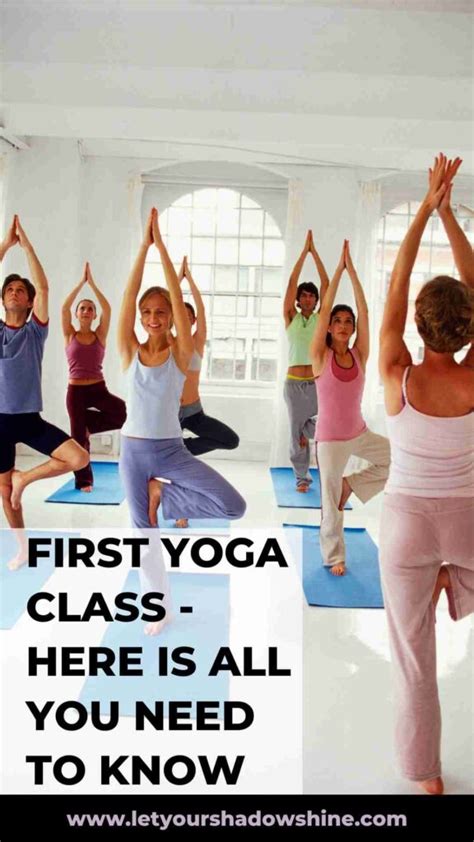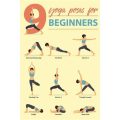Mastering Your First Yoga Class: A Beginner’s Guide for a Seamless Experience
Are you feeling nervous about your first yoga class? Don’t worry! Yoga is a practice that welcomes everyone, regardless of fitness level or experience. In this guide, we’ll cover everything you need to know to make your first yoga session a success. From what to bring and wear, to the poses you’ll encounter, and how to handle common concerns, this article will walk you through your initial yoga experience step-by-step, ensuring you feel confident and prepared. Let’s dive in!
Introduction to Yoga for Beginners
Yoga, a practice that originated in ancient India, is much more than just physical exercise. It involves a combination of mindfulness, breath control, and postures designed to promote flexibility, strength, and overall well-being. For beginners, the variety of styles and terminology can seem overwhelming, but don’t fret. This guide is designed to help you feel more at ease and introduce you to the fundamentals of yoga.
By the end of your first class, you’ll likely experience feelings of calm, focus, and rejuvenation. However, getting to that point can come with a few challenges, especially if you’re unsure of what to expect. This article addresses common concerns while providing helpful tips to ensure your yoga journey starts on the right foot.
Key Concepts to Know Before Your First Class
Here are some essential terms and concepts you might encounter in a typical yoga class:
- Asana: The physical postures or poses practiced in yoga.
- Pranayama: Breathing techniques used to control your breath and energy.
- Savasana: A relaxation pose usually done at the end of class to calm the body and mind.
- Namaste: A traditional Sanskrit greeting often exchanged at the end of a yoga class, meaning “I bow to you.”
- Flow: A sequence of postures that transition smoothly from one to the next, often coordinated with the breath.
Becoming familiar with these terms before your first class will help you feel more comfortable and confident when following the instructor’s cues.
Historical Context of Yoga
The history of yoga spans thousands of years and originates in ancient India. Yoga was first mentioned in the Rigveda, one of the oldest sacred texts, around 1500 BCE. Over centuries, yoga evolved through different stages, each influencing the various practices we see today.
In the early 20th century, yoga became popular in the West, thanks in part to figures like Swami Vivekananda and Paramahansa Yogananda. Today, yoga is practiced worldwide, with various styles and schools offering distinct approaches. Understanding this rich history provides valuable context for the spiritual and philosophical aspects of yoga.
Current State of Yoga: A Global Phenomenon
Yoga has exploded in popularity globally, with millions of practitioners around the world. In the West, it is often seen as a way to improve physical fitness and manage stress. Popular styles include Vinyasa, Hatha, and Yin, each offering unique approaches to practice.
Whether you’re looking for a meditative, slow-paced experience or a vigorous workout, there’s a yoga style that can fit your needs. Knowing this will help you choose the right class for your first session.
Practical Tips for Your First Yoga Class
Here’s what you should know to make your first yoga experience enjoyable:
What to Bring
- Yoga Mat: If the studio doesn’t provide one, bring your own mat. Look for one with good grip and comfort.
- Water Bottle: Hydration is key, especially during more physically intense classes.
- Towel: Some yoga styles, like hot yoga, can make you sweat. A towel can come in handy.
- Comfortable Clothing: Wear clothes that allow for easy movement, such as leggings or shorts and a breathable top.
What to Expect
Don’t worry if you can’t perform every pose perfectly! Instructors often offer modifications to suit different experience levels. Focus on your breath and go at your own pace.
Common Concerns
- “I’m not flexible enough!” Flexibility comes with time. Yoga is about improving flexibility, not starting with it.
- “What if I fall out of a pose?” It happens to everyone! Yoga is about learning and growing, so don’t be discouraged.
Yoga Case Studies: Stories of Beginners’ Experiences
Here are a few real-life experiences from people who took their first yoga class:
| Beginner | Initial Concerns | Outcome |
|---|---|---|
| Samantha | Worried about being inflexible | After a few weeks, she noticed gradual improvements in flexibility and strength. |
| Jason | Concerned about not knowing the poses | The instructor’s guidance helped him feel more confident, and he enjoyed the challenge. |
| Lily | Self-conscious about her appearance | She realized that yoga is a non-judgmental space where everyone focuses on their own journey. |
Stakeholder Analysis: Who Benefits from Yoga?
Yoga’s benefits extend beyond individual practitioners. Here’s a look at the different stakeholders impacted by the practice of yoga:
- Practitioners: Physical and mental health improvements.
- Instructors: Opportunities for teaching and personal growth.
- Studios: Growing business opportunities as yoga gains popularity.
- Healthcare Providers: Offering yoga as part of a holistic approach to wellness.
Guidelines for Implementing Yoga in Your Life
If you’re ready to integrate yoga into your daily routine, here are some helpful guidelines:
- Start Slow: Begin with one or two classes a week to build consistency.
- Mix Styles: Try different styles of yoga to see which resonates with you.
- Create a Space: Set up a quiet, comfortable area at home where you can practice.
- Stay Patient: Yoga is a lifelong practice. Enjoy the journey rather than focusing on immediate results.
Ethical Considerations in Yoga Practice
Yoga isn’t just a physical practice; it has ethical dimensions rooted in principles such as non-violence (ahimsa) and truthfulness (satya). As you engage in yoga, keep in mind the importance of:
- Practicing with respect for your body’s limitations
- Avoiding cultural appropriation
- Being mindful of the impact of commercializing yoga
Limitations and Future Research in Yoga Practice
While yoga offers numerous benefits, there are some limitations to be aware of:
- Medical Conditions: People with certain medical issues (e.g., back problems) should consult a doctor before starting yoga.
- Commercialization: As yoga grows in popularity, some argue that its deeper spiritual aspects are being overshadowed.
- Accessibility: While yoga is often portrayed as inclusive, financial or physical barriers may prevent some from practicing.
Further research is needed into the long-term effects of yoga on mental health, as well as how yoga can be made more accessible to underserved populations.
Expert Commentary
Yoga experts agree that starting yoga is one of the most beneficial steps you can take for your physical and mental health. While beginners may feel unsure at first, the beauty of yoga lies in its adaptability and inclusiveness. With a wide range of styles and approaches, anyone can find a way to practice that suits their needs.
Ultimately, the key to a successful yoga journey is patience, openness, and a commitment to self-care. As you progress, remember that yoga is not about achieving








